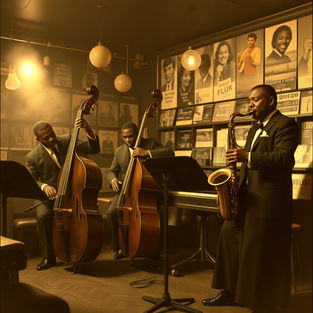
Photo- AI Generated
The Influence of Gospel Music on 1950s Pop Culture
In the rich and transformative panorama of 1950s pop culture, gospel music emerged as a tremendous spiritual force.
6 July 2025
Gospel, which originated in African-American church traditions, introduced emotional intensity, vocal force, and intensely expressive rhythms that influenced the sound and spirit of rhythm and blues, rock 'n' roll, and soul. As mainstream America listened to the radio and vinyl records, the echoes of gospel could be heard in jukeboxes, concert halls, and teenage bedrooms.
The cultural significance of gospel music was centred on its powerful performers. Artists like as Mahalia Jackson, Sister Rosetta Tharpe, and Sam Cooke (who worked with The Soul Stirrers) popularised the church's passion and vocal acrobatics.
Jackson's dominating contralto and unrelenting devotion helped her become one of the most recognised gospel singers of all time, influencing not only artists but also civil rights activists such as Dr. Martin Luther King Jr. Sister Rosetta Tharpe, with her scorching electric guitar and magnetic stage presence, obliterated the boundaries between spiritual and secular music, inspiring later rock luminaries such as Elvis Presley and Chuck Berry.
The framework of gospel music, with its call-and-response phrasing, complex harmonies, and emphasis on emotional catharsis, served as a prototype for rising pop genres. Young artists who learnt their craft in church choirs brought the same raw passion to early rock 'n' roll. Elvis frequently listed gospel as his favourite music, and his interpretations of gospel standards won him more Grammy Awards than any of his rock singles. The holy melodies of the South were suddenly driving the heartbeat of teenage rebellion.
Beyond individual musicians, gospel influenced how music was performed and experienced. Its collaborative mentality, which emphasises participation over passive listening, influenced live performance approaches across genres. The intensity of gospel choirs—shouting, clapping, and moving in time—inspired the concert dynamics of soul and rock shows, in which singers thrived off the energy of their audiences.
Gospel music in the 1950s was more than just a genre; it was a cultural trend. It created a moral and emotional framework for a generation negotiating postwar optimism and societal change. The music lifted, moved, and inspired. Gospel had an indisputable presence everywhere, from the church pews of the Deep South to the neon-lit dance halls of urban America. Its impact may still be seen in all aspects of modern pop music today, but in the 1950s, it was the spirit that sparked a revolution.
YOU MAY ALSO LIKE









